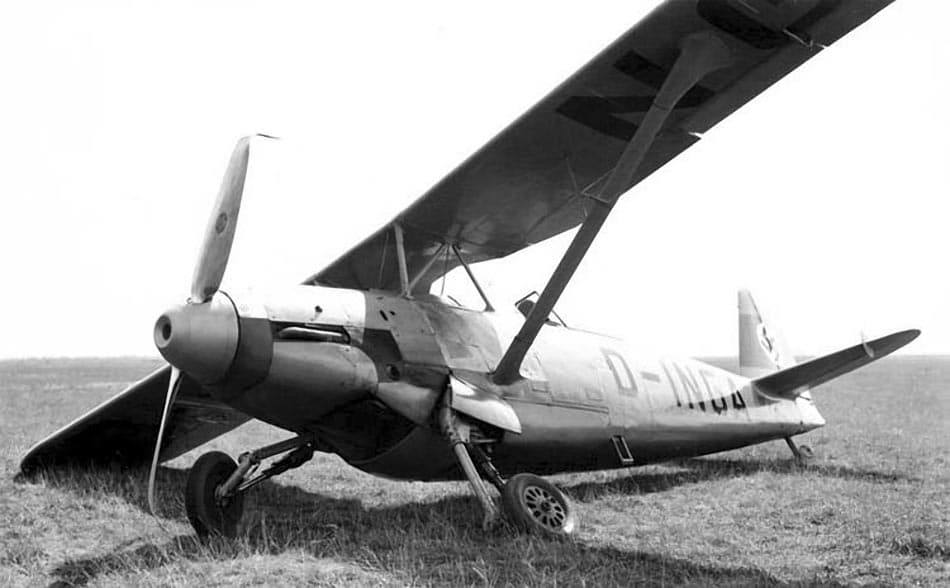- Yes
- Maybe
- No
History.
In 1934, the Reichsluftfahrtministerium issued the ‘Rüstungsflugzeug IV’ competition to equip the German air force with a new fighter aircraft to replace the old biplane fighters. The competition stipulated precise specifications and the major German aircraft companies, including Focke-Wulf, entered the competition, albeit later than their competitors, with a fighter aircraft designed by Kurt Tank and based on a promising training aircraft by the same designer.
The aircraft, of metal construction, featured an unusual (for a monoplane fighter) parasol wing above the fuselage and looked promising according to calculations made by the company’s engineers. The prototype aircraft, named Fw 159 V1, flew in November 1935 under the designation D-IUPY, but during the landing at the end of the first flight near Travemünde the aircraft was damaged due to difficulties in retracting both landing gears. The pilot escaped with a few scratches but the aircraft was too badly damaged to continue flying. It was decided to build a second example with some improvements, named Fw 159 V2 (already under construction but improved after the accident), factory number 933 and registration plate D-INGA, and it too suffered various damages in subsequent flights due to unfortunately unsolvable technical problems. Testing continued until 1938, with the competition now over, despite the fact that it was now clear that this aircraft was hopelessly outdated.
This aircraft was finally scrapped after testing in 1940, despite Kurt Tank’s commitment and faith in the aircraft, together with the other surviving prototypes and the still later prototype aircraft.
Armaments and propulsion.
In its penultimate version, the V-2, the aircraft was armed with two 7.92 mm MG-17 machine guns. Each weapon was equipped with 500 rounds, although originally planned to be equipped with 1,000 (reduced for space reasons).
In terms of engines, the aircraft was powered by a 12-cylinder Junker Jumo 210Da/Ea engine with 680 hp, which could propel the aircraft up to a top speed of 386 km/h.
Specifications.
Spoiler
Crew: 1
Weight: 2.320 kg
Lenght: 10 m
Height: 3.50 m
Horizontal tail opening: 4.22 m
Width: 1.08 m
Propeller diameter: 3.30 m
Propeller surface area: 8.55 m²
Track width: 2.30 m
Wheelbase: 7.45 m
Wing surface area: 20.22 m²
Engine: 1x Junker Jumo 210Da, 680 cv
Maximum speed: 386 km/h
Armament: 2x MG-17 (500 rounds each)
Range: 720 km
Pictures and drawnings.
Sources.
Spoiler
FW-159
“Heinkel He 112 in action”
Focke-Wulf Fw 159
Luftwaffe Resource Center - German Luftwaffe (Air Force) from 1935-1945 - A Warbirds Resource Group Site
LuftArchiv.de - Das Archiv der Deutschen Luftwaffe
Focke Wulf Fw 159
Уголок неба ¦ Focke-Wulf Fw.159
Focke-Wulf Fw 159 - fighter
Junkers Jumo 210 (L10)





